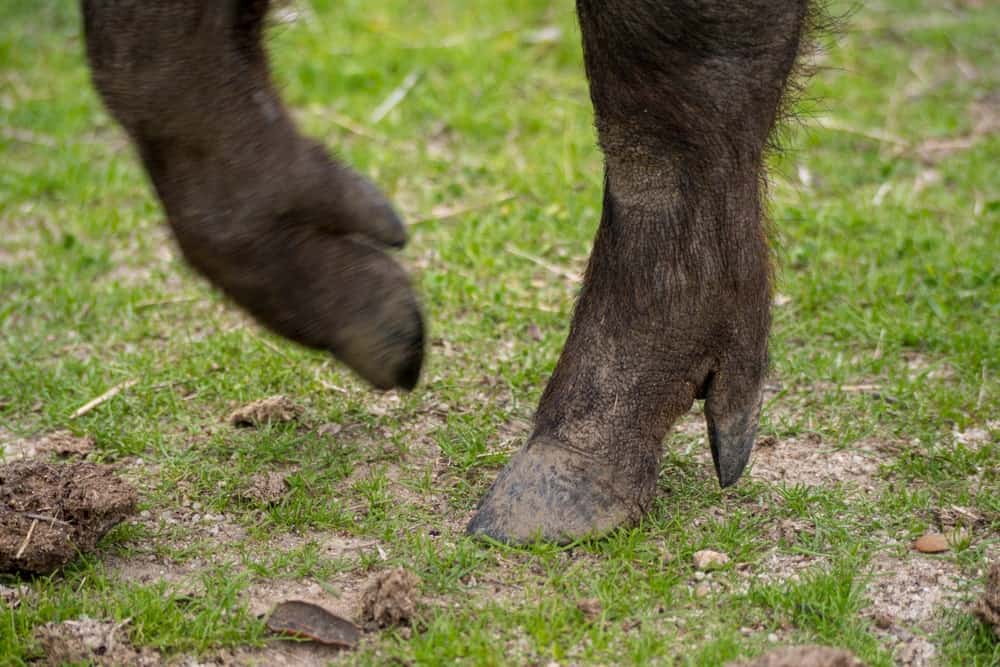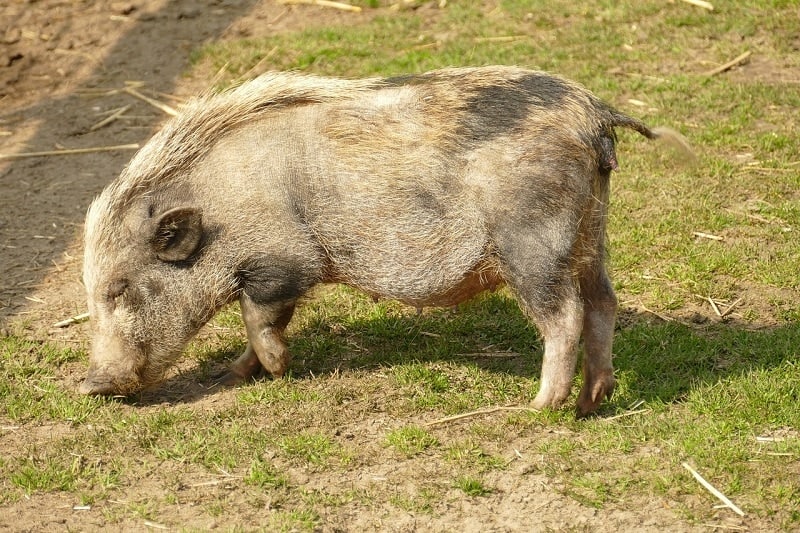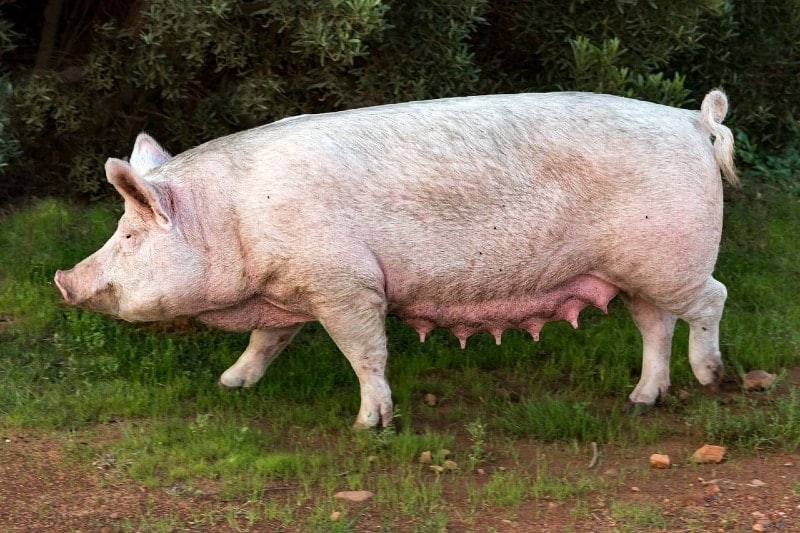If you’ve ever looked at pig’s feet, you might have found yourself wondering about them. Are they hooves? They don’t look like most of the hooves that you’re probably familiar with, like those of a horse. You’ve probably also heard about trotters in relation to pigs. So, which is it? Do pigs have hooves or trotters?
Pigs actually have both! Trotters are pig’s feet and pigs have hooves.
Here, we define what trotters are and have a closer look at what kind of hooves that pigs have. We also look at what they’re used for (beyond just basic walking) and other bits of information, so you’ll learn all about pigs and their feet.

What Are Hooves?
Many animals have hooves. The Cambridge Dictionary defines the hoof as “the hard part on the bottom of the feet of animals such as horses, sheep, and deer.” These animals are also called ungulates, which is a fancy way of describing herbivore, four-legged, and hooved mammals.
Hooves are made with the same kind of material as your fingernails and hair, known as keratin, and they are either cloven or uncloven. They are quite hard but continuously grow, and domesticated animals with hooves need to have them trimmed regularly.

What Kind of Hooves Do Pigs Have?
Pigs have cloven hooves, which means their hooves are divided into two parts. They’re not like solid horse hooves. Cloven hooves are also found on goats, deer, and sheep — these are called even-toed ungulates.
The two front parts of the pig’s hooves are sometimes referred to as digits or toes. They have two digits, or dewclaws, alongside and toward the back part of their hooves. Dewclaws can be found on all kinds of animals, and in some cases, they are useful. The hooves are essentially covering the pig’s toes, so including the dewclaws, pigs have four toes altogether.

What Are Trotters?
Merriam-Webster defines trotters as “a pig’s foot used as food.” They are also called pettitoes. Trotters are used in a variety of different dishes. They are typically used in stocks and are described as having an almost vinegary and light pork flavor.
How Do Pig Hooves Work?

Wild pigs must travel long distances when on the hunt for food sources, which makes their feet and therefore, their hooves essential. Their hooves help them keep their balance on uneven and rough terrain. Traveling over ground that can be hard and rocky or soft and spongy requires the pig to have feet that can support them.
The cloven hooves of the pig give them excellent balance and provide them with sturdy and strong support over long distances and changing terrain. This includes mud, which we all tend to associate with pigs. Pigs also have short little legs that keep them closer to the ground, which makes foraging much easier.
Since a pig’s hoof is split in two, it enables much more dexterity than an uncloven hoof (like that of a horse). Animals like zebras and horses live on flat and solid ground and don’t need the same kind of nimbleness that animals like pigs and sheep require. They are essentially walking on their toes, which gives them agility and a certain amount of swiftness.
Hooves for Defense
The pig’s hooves also come in handy for defense purposes. Pigs can run quite quickly on their short legs and cloven hooves, and they are capable of dashing toward shelter if they are threatened by a predator.
They are also quite capable of using their hooves to push things out of their way, and they come in handy for kicking in self-defense. Domesticated pigs have not retained the tusks of their wild cousins, so their hooves are definitely their best defense.
Do Pig Hooves Need Trimming?

Since wild pigs and boars are constantly moving over rough ground, they don’t need their hooves trimmed because it’s done naturally over time. However, domesticated pigs tend to only walk on softer terrain (and mud), so their hooves continuously grow and need trimming.
A neglected pig will end up with overgrown hooves, which are extremely difficult to walk on and will cause the pig pain and discomfort.
Trimming generally occurs about every 6 months to 1 year but needs to be done more frequently with younger pigs because their hooves grow much faster.
Pigs don’t enjoy the process of hoof trimming, even though it doesn’t hurt. Like most animals, they don’t like having their feet touched. Piglets should have their feet touched on a daily basis to become accustomed to this.
Typically, trimming occurs with a nail cutter to remove the excess and is followed by a nail grinder or Dremel to help smooth things down.
Conclusion
Pigs do have hooves, and the use of the word “trotter” is used in cuisine lingo for pig’s feet. This means pigs have both hooves and trotters. The pig’s cloven hooves are handy for keeping the pig’s balance and making them nimble, particularly for animals that can get rather large! Considering that their hooves are essentially toes, pigs are basically walking on their tippy toes.
Hooves are used not only for running and walking but also for self-defense, so all around, they are quite handy for our pig friends.
Featured Image Credit: stevepb, Pixabay
